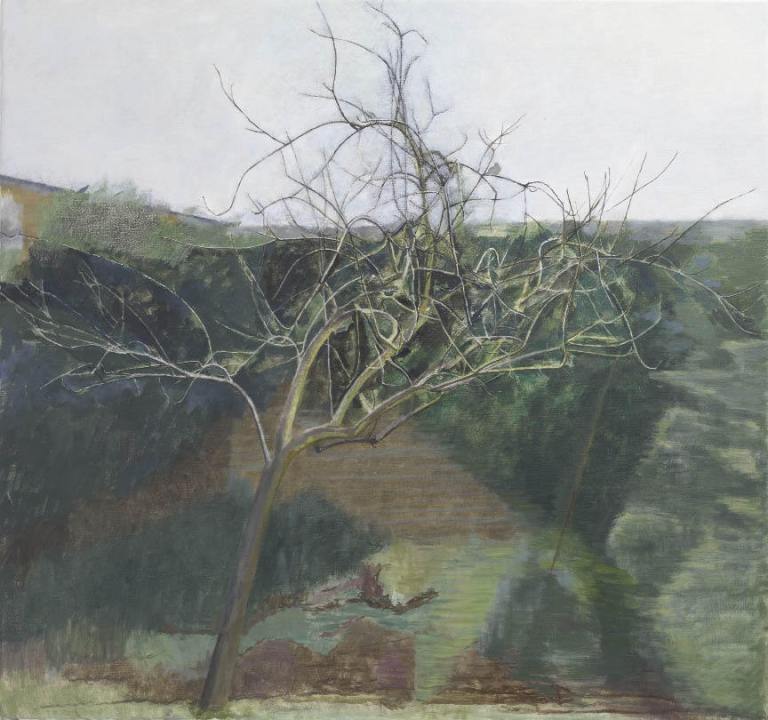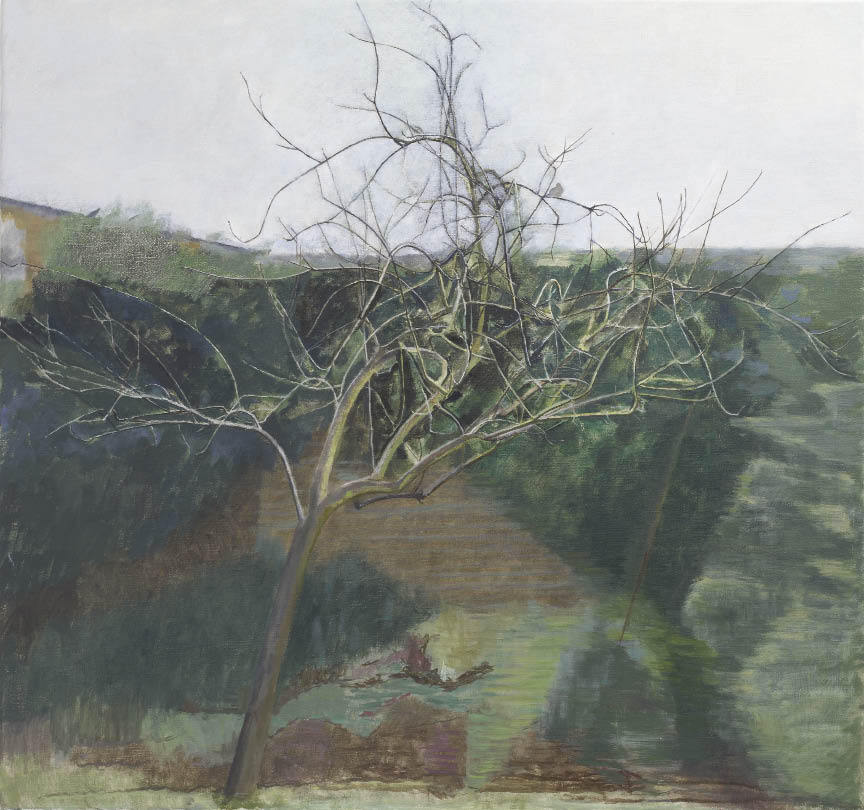There were two John Tradescants, father and son, operating in the 17th century as travellers and gardeners from a base in south London. Their family tomb is at the heart of the garden surrounding the Garden Museum in the former church of St Mary-at-Lambeth in Lambeth Palace Road, a garden designed as a Tradescant memorial 30 years ago by the Dowager Marchioness of Salisbury.
This hallowed place has been the principal subject for the past year of the painter Charlotte Verity (born 1954), the museum’s first artist-in-residence. The initiative has been generously funded by the Cochemé Trust, and the results of Verity’s year-long residency are now on show in the museum’s new gallery.
A handsome publication has been produced to celebrate the event, with useful texts by garden writer Sarah Langton-Lockton and art historian Simon Wilson, and a generous selection of extracts from the artist’s own journal.
The exhibition is not a dramatic affair, but it strikes a sustained note of quiet and affectionate commemoration which is no less affecting for being low-key. Verity is adept at understatement and subtlety. As Langton-Lockton writes: ‘Her paintings and drawings are not primarily about recording the garden, although there is an element of that, nor are they a plant inventory; they are simply about the life of the museum as expressed by its garden.’
Verity is an experienced garden painter, having focused for many years on her own Camberwell garden, but this new body of work (which includes pictures of other subjects as well as the Garden Museum) is without doubt her strongest yet. She was evidently inspired by the intensity and restrictions of the new environment — she writes that the ‘essence of the place is change within a structure’ — and this has informed her own response.
Verity, although equipped with a shed for a studio, worked outside in even the coldest weather (she calls it ‘a two-hat day’ when the temperature really plummets), and observes that she had never felt the passing seasons quite so keenly. She was always on the run, as it were, trying to keep pace with changing nature and the plethora of possible subjects. Although her attention is focused on the garden, she is occasionally made aware of the outside world, as when a rubbish lorry overturns in the road or she enjoys watching two sun loungers being delivered to Lambeth Palace by a John Lewis van. Unexpectedly, she doesn’t see the Archbishop of Canterbury until near the end of her year, in December, and then describes him as ‘a surprisingly slight figure’.
Her journal is in effect a litany of celebration, threaded with self-doubt and the sense of temporary defeat every self-questioning artist experiences from time to time. Turn from her writings to her paintings and her real capabilities become clear. She is skilled at the unfussy evocation of subject, for instance in the several studies of snowdrops, of which ‘Snowdrops and Dark Glass’ is perhaps the most effective. Her painting ‘Birches in Winter’ is at once authoritative and tender. In ‘Buttress’ she poignantly isolates a section of the church wall and depicts its covering of sunlit lichen, contrasting the yellowy-green with the grey-blue glass-fronted high-rise behind.
This is an exhibition of mostly small paintings, punctuated with a few larger examples and a wall of drawings. One of the largest is the impressive ‘Heron’s Vermilion’, made with paint from the late Patrick Heron’s studio. This is a much more declarative image than, say, ‘Lunaria’, a lovely subject (the winter ‘pennies’ of the honesty plant) which I found slightly disappointing — I wanted the pennies to be at once more luminous and more papery.
But there are many lovely things here, including the exquisitely phrased sepia watercolour ‘Winter Trees’, the intriguing ‘Belisha Beacon’, the very delicate ‘Summer Rain’ and the paintings of Cornus, pear blossom against the light and pear and bay together. The ambitious paintings presenting the top of the Tradescant tomb against growing foliage (human life is short but nature is self-renewing) successfully embrace a wider subject. The museum’s director, Christopher Woodward, describes Verity as ‘one of the few artists whose writings and drawings convince both artists and gardeners’. The exhibition, when taken in conjunction with the artist’s journal, constitutes a remarkable tribute to a flourishing centre of excellence in the gardening and artistic community.
Back to the sculpture trail, in continuation of my round-up in the last issue, and a visit to Jubilee Park at Canary Wharf is recommended. Here Charles Hadcock (born 1965) has sited a group of his recent works in this delightful rus in urbe of grass, trees and running water. My visit coincided with a burst of perfect spring weather, and people were strolling around or lying on the grass, photographing the sculptures or chatting on mobile phones. The sculptures fit into the environment very well while adding immeasurably to the visual excitement of the park.
Out on the plaza in front of the Tube station is the largest piece, a new version of ‘Verticil’, which I last saw in the autumn of 2009 in Hanover Square, when it was lying on its side. Now it has been raised to the skies, propped up on a chunk of granite, and displays its stepped globe in a vertical position. This is a great improvement and it looks marvellous here as a marker for the park display (until 20 May).
Inside the park, half-a-dozen substantial sculptures are dotted about to great effect, demonstrating Hadcock’s abiding interests in engineering, maths and music. The warmth of colour from the cast iron and bronze and the shape-invention make a striking contrast to the high-rise glass palaces surrounding this oasis. Among the best pieces are the triangulated ‘Caesura VIII’, ‘Torsion II’, a kind of organic stepped tower, very dramatic, and a big free-standing wall piece of parallelograms bolted together. I also liked ‘5 Section Spiral’ and ‘Dupin Cyclide’, which refer to the forms of fossils and water turbines.
Meanwhile, back in central London, there’s a small but enjoyable show of British sculpture at Flowers (21 Cork Street, W1, until 30 April). Here are domestic-scale pieces by Caro, Paolozzi and Phillip King (I particularly liked ‘Ubu’s Camel’), a couple of elegant carvings by Denis Mitchell and two bronzes by Michael Sandle, whom Flowers has just undertaken to represent. A solo show of this important sculptor is forthcoming and I hope to write about it.
‘Apple Tree in Winter’ by Charlotte Verity
‘Ubu’s Camel’ by Phillip King







Comments